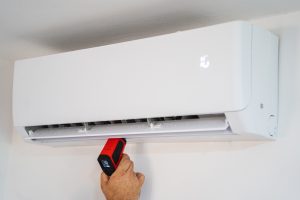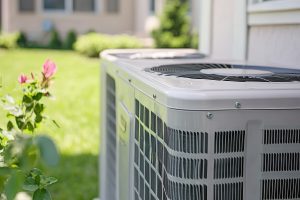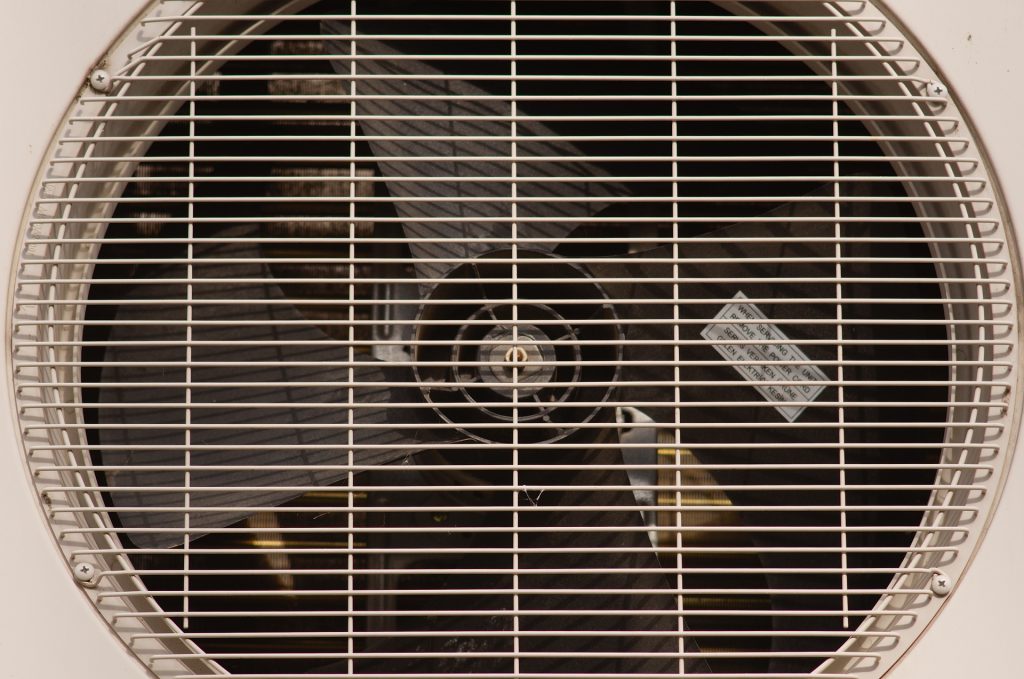Manufacturers include a metering device called the thermostatic expansion valve as a standard component in air conditioning systems. HVAC technicians at AHWA are well versed in the way this valve is designed and how it functions, but you may not be as familiar. We’re here to explain a bit more about it to you.
What is a thermostatic expansion valve?
The thermostatic expansion valve is a prime element in your HVAC system, but before we get further into what it is, let’s talk about how the system works as a whole.
Refrigeration works as a four-prong cycle that involves a compressor, a metering device, a condenser, and an evaporator. Air conditioning is the end result when the refrigerant is pumped through this circuit.
The cycle begins with refrigerant entering the compressor. At this point, it will become a low-pressure, medium-temperature gas. This gas is compressed in the compressor to form a high-temperature, high-pressure gas that will then be sent to the condenser. The condenser cools the gas, thus allowing it to condense to a high-pressure liquid created by transferring heat to a lower temperature medium such as ambient air.
This is where the thermostatic expansion valve kicks in. To convert the higher pressure liquid into cool air, the expansion valve reduces the pressure and allows it to be pushed back into a vapor form of a lower temperature. The sensing bulb in the expansion valve is filled with a liquid similar to the refrigerant. This bulb is what allows the valve to detect the temperature of the refrigerant leaving the evaporator. This information allows the sensing bulb’s gas pressure to force the valve open, adjusting the refrigerant flow into the evaporator. It is then superheated as the refrigerant leaves the evaporator.
This superheat pushes the temperature of the vapor well above boiling to achieve the evaporating pressure. If superheating does not occur, it means the refrigerant wasn’t fully vaporized in the evaporator, which can leave the liquid to recirculate back into the compressor. An insufficient amount of refrigerant hitting the evaporator coil can cause excessive superheating, which means most of it doesn’t contain any liquid refrigerant. This equates to there not being sufficient cooling when the process is completed.
The regulation provided by the thermodynamic expansion valve keeps the superheat down to a few degrees Celsius so that the heat transfer developed by the evaporator is optimal and any excess refrigerant is prevented from flowing back into the compressor.
What does a thermostatic expansion valve do?
So, now that you understand a bit more about how the overall system works let’s talk a bit more about the specific functions of the thermostatic expansion valve. The role it plays within the system is a testament to the engineering that makes it an integral component of newer systems being manufactured today. It provides a much-needed function that maximizes operational efficiency and keeps the system running smoothly.
The thermostatic expansion valve was designed to control the amount of liquid refrigerant flowing into the evaporator. The regulated flow keeps the evaporator operating at the high rate of efficiency it was designed to achieve without allowing excess refrigerant to backflow into the compressor, which means the cool air it creates is at a maximum, using less energy and keeping your home suitably cooled.
This process is achieved by separating the high and low-pressure sides of the air conditioning system. This allows the liquid refrigerant to enter the valve at a high-pressure rate, but then the pressure is reduced by the valve so that too much isn’t allowed to enter the evaporator.
The sole job of the thermostatic expansion valve is to control the flow rate of the liquid refrigerant in your HVAC system. It does not control humidity, air temperature, suction pressure, head pressure, or capacity. Some have attempted to alter its intended purpose to control these other features, but doing so only diminishes system efficiency and can lead to compressor failure.
The thermostatic expansion valve diagram below shows the basics of how it is designed and how it operates.
MasterTriangle12, CC BY-SA 4.0 <https://creativecommons.org/licenses/by-sa/4.0>, via Wikimedia Commons
How does the thermostatic expansion valve control the system?
The thermostatic expansion valve matches the flow rate of the liquid refrigerant against the speed with which the refrigerant boils off in the evaporator coil. It accomplishes this by sensing the temperature of the refrigerant as it leaves the evaporator and the pressure exerted in the evaporator. A movable valve pin operates against the spring pressure to maintain precision control of the flow of liquid refrigerant into the evaporator.
In simplest terms, the bulb pressure and liquid pressure work together to maintain an even opening force, while the evaporator and spring pressure work together to maintain the closing force. This operation of the thermostatic expansion valve is developed to provide control with a precision not achieved before its introduction into HVAC systems during original equipment manufacturing.
If you refer back to the diagram, you can better see how it operates. The valve pin is designed to restrict the flow of the liquid refrigerant. This causes the pressure of the refrigerant to drop and allows a small amount of it to be converted to gas. This is commonly called “flash gas”, a component that facilitates a high degree of energy transfer as the refrigerant is converted to latent heat. The low-pressure liquid and vapor move into the evaporator as the remainder of the liquid refrigerant boils off into gas form as heat is absorbed.
It is the drop in pressure that happens within the thermostatic expansion valve that plays a key role in the system’s operation. While moving through the evaporator, the low-pressure refrigerant and gas combo vaporizes and absorbs heat from the system. The system won’t operate properly without this precise control exercised by the valve as it reacts to system conditions as they occur.














